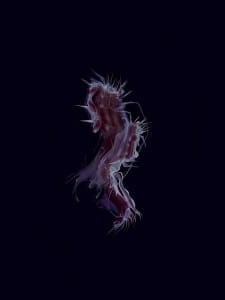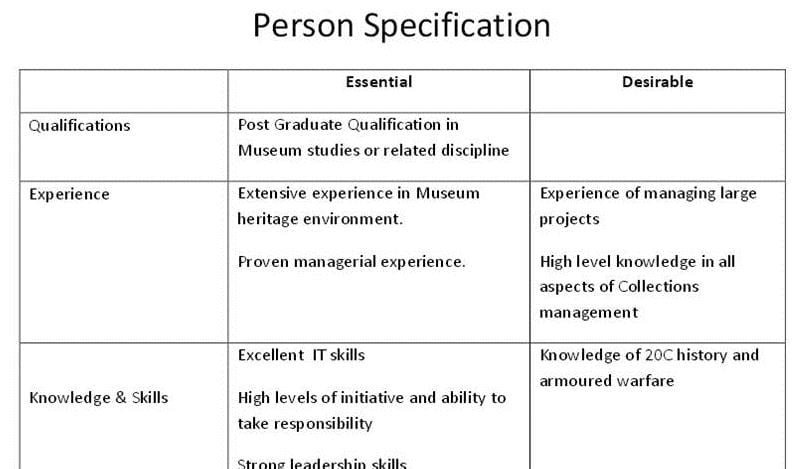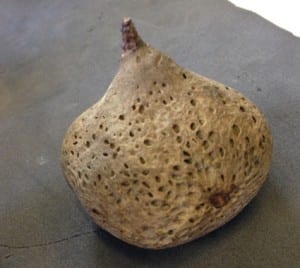Underwhelming Fossil Fish of the Month: October 2014
By Mark Carnall, on 31 October 2014
October has been a bumper month for not-so-underwhelming-fossil-fish with show off species Microbrachius dicki making headlines early this month for inventing penetrative sex (although of course you and I know that this hyberbolic reporting conflates the ever so slight nudging of oldest evidence of internal fertilisation in our branch of the tree of life with the invention of sex but, hey, at least it got reported). However, it does mean that in order to keep the fossil fish hype-ometer at a steady level we’re going to have to go really underwhelming in this month’s exploration of underwhelming fossil fish to even it out.
I think I’ve done it though. Be prepared for the dullest underwhelming fossil fish of the month ever. It’s less exciting than this image of the reverse of 2013’s Loganellia scotica. Yes, it’s duller than the fossil most notable for its similarity to a pavement slab. I’d recommend painting a wall and watching the paint dry after reading this because you’ll need something to get your heart racing again.
Stunning prints for sale from Subnature Exhibition: Prices reduced
By Jack Ashby, on 29 October 2014
Back in May this year we opened the exhibition Subnature by the UCL Slade School of Fine Art’s Lan Lan. The highlight of the exhibition were a series of extremely high quality prints, generated by digitally manipulating photographs of sculptures the artist had created from fish bone.
The resulting images resembled at once both marine creatures and galaxies.
At the end of the exhibition the prints were offered for sale. We are now very pleased to announce that the artist has kindly allowed us to significantly reduce the prices to assist with our raising funds for our major conservation project to preserve 39 of our large skeletons, including the world’s rarest skeleton, the quagga.
Details of the sale, and images of the stunning prints can be seen on the Subnature sale website.
The prints are available for a limited time only, until 23rd December 2014.
Jack Ashby is the Manager of the Grant Museum of Zoology
Specimen of the Week: Week 159
By Dean W Veall, on 27 October 2014
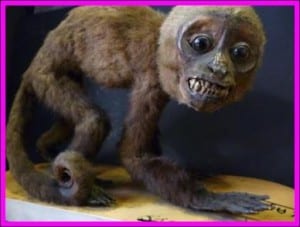 Dean Veall here. My turn on SoTW has come round again and this week I have chosen a specimen that belongs to the group that is a favourite of museums to hang from ceilings, in fact one of my first museum memories was as a young curly haired child wandering around Amgueddfa Cymru-National Museums Wales (AC-NMW), National Museum Cardiff, and encountering one dangling from the ceiling. There’s a hint of my choice there, museums love to suspend things from the ceiling and the top favourites tend to be whales, seals and birds, (we like to break the mould here at the GMZ and have instead chosen to suspend our seal from the balcony). My specimen this week also comes from a group of animals that date back a phenomenal 220 million years. Some individuals of the group that this week’s specimen belongs to are the longest lived animals on the planet. You should be warned this week’s blog contains some cute images of young versions of this species. This week’s specimen is……..
Dean Veall here. My turn on SoTW has come round again and this week I have chosen a specimen that belongs to the group that is a favourite of museums to hang from ceilings, in fact one of my first museum memories was as a young curly haired child wandering around Amgueddfa Cymru-National Museums Wales (AC-NMW), National Museum Cardiff, and encountering one dangling from the ceiling. There’s a hint of my choice there, museums love to suspend things from the ceiling and the top favourites tend to be whales, seals and birds, (we like to break the mould here at the GMZ and have instead chosen to suspend our seal from the balcony). My specimen this week also comes from a group of animals that date back a phenomenal 220 million years. Some individuals of the group that this week’s specimen belongs to are the longest lived animals on the planet. You should be warned this week’s blog contains some cute images of young versions of this species. This week’s specimen is……..
Following Captain Cook, and How the Kangaroo Nearly Never Was
By Jack Ashby, on 24 October 2014
The Grant Museum is extremely excited to be a partner in the National Maritime Museum’s Travelers’ Tails project, which will involve this painting of a kangaroo by George Stubbs – the first ever western painting of Australian wildlife – coming to the Grant in March.
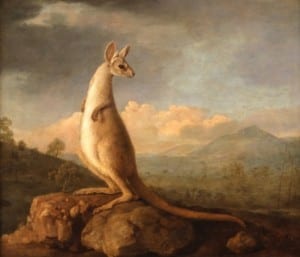
The Kongouro from New Holland (Kangaroo), George Stubbs (1772). ZBA5754 (L6685-001). National Maritime Museum, Greenwich, London*
Last month I was in Australia on zoological fieldwork. I decided to visit the places that Cook went on his first voyage of discovery, which resulted in Britain’s first kangaroo encounters and ultimately this painting being made. It very nearly didn’t happen, and Cook’s Australian expedition would have been a zoological disappointment.
I wrote this post for the National Maritime Museum’s blog. It begins…
The kangaroo painting that might never have been – following in Cook’s footsteps
The painting of the kangaroo by George Stubbs would never have existed if it weren’t for an extraordinary bit of bad luck in a very dangerous situation. Read the rest of this entry »
Sunshine in Stratford
By ucwemdo, on 22 October 2014
Excited about Interstellar, the new sci-fi blockbuster by Christopher Nolan (who, incidentally, is an alumnus and honorary fellow of UCL)?
To get you in the mood, we are holding an evening of space exploration on 28th October at 8pm at Stratford Picture House with a special screening of Danny Boyle’s sci-fi epic, Sunshine, which will be accompanied by a talk by solar researcher, Jamie Ryan, from UCL’s space research facility.
Specimen of the Week: Week 158
By Will J Richard, on 20 October 2014
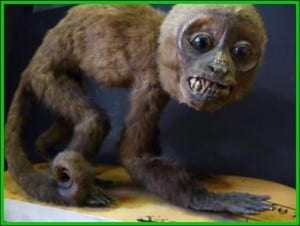 Hello! Will Richard here. I’ve just started working in the Grant Museum and for my first ever Specimen of the Week I thought I’d kick things off with a real “teddy bear” of the treetops. Of course, it’s not actually a bear. And nor, in real life, would it enjoy a cuddle. Shame really.
Hello! Will Richard here. I’ve just started working in the Grant Museum and for my first ever Specimen of the Week I thought I’d kick things off with a real “teddy bear” of the treetops. Of course, it’s not actually a bear. And nor, in real life, would it enjoy a cuddle. Shame really.
So… why did I pick this imposter? Well firstly, I like underdogs. And you don’t get more underdog than this. Secondly, I’ve spent some time with them myself and I’ve always been told to “write about what you know”. And thirdly, of all the things I’ve come across so far in the Grant Museum, this skeleton just happens to be my favourite.
This week’s Specimen of the week is… Read the rest of this entry »
Does a museum studies degree help you get a job in museums?
By Jack Ashby, on 16 October 2014
Despite the levels of pay and instability of the jobs at the lower rungs (at least) of this particular career ladder, working in the museum sector is incredibly competitive.
As a result, aspiring museum workers often face the question of how to position themselves as the strongest candidate in the pool. Should they take the plunge and stump up thousands of pounds to do a Museum Studies masters degree? It’s worth taking a second to consider that even being able to ask that question is a non-starter for the majority of people, who can’t afford it. Those people shouldn’t be excluded for the museum sector.
The Grant Museum Curator Mark Carnall (who has a Museum Studies degree) gave his opinion on this last year, and I thought I should offer my own personal perspective, as someone in a reasonably senior museum role who doesn’t have this degree.
For me, there are very few circumstances when I would recommend someone did a Museum Studies degree. Obviously I am biased by own own experience, and so this is my own personal take on things. Read the rest of this entry »
Mystery Blob Sponge: It crawls! It creeps! It eats you alive!
By ucwaemo, on 14 October 2014
Day four of my sponge exploration (I’m here for ten months as the Museum’s Artist in Residence). There’s one specimen on the shelf that I’ve been saving as a particularly special treat… it looks like an onion, it’s not sealed in a jar, and it doesn’t have a label. It’s in the glass sponge cabinet, but it doesn’t look like the other specimens. Instead, it has a grey doughy appearance, covered in small holes, and it tapers at the top into a dark red spiral. I take it back to my desk for a closer look.
One of the (many) great things about spending time in the Grant Museum is that I share a room with people who not only know a lot about zoology, but also want to keep finding out more. I like to distract them from their work with questions like, ‘How do things, erm, grow?’. They are very patient. But today, I had a new question: ‘What is this oniony pointy sponge that has no label?’ Was it, perhaps, the broken base of a glass rope sponge? No – a glass sponge is too thready. Was it a fossil? No – a fossil would be heavier. Then we had a closer look at its pointy top: Read the rest of this entry »
Specimen of the Week: Week 157 (an exciting rediscovery?)
By Mark Carnall, on 13 October 2014
 Segueing nicely on from Jack’s evolution of life on land specimens of the week last week, we’re sticking to specimens in our ‘MEET THE ANCESTORS’ case. This week’s specimen is a rather lovely fossil and whilst undertaking a bit of research for this blog post I uncovered a rather twisty turny series of clues that point to this specimen being a ‘type specimen‘.
Segueing nicely on from Jack’s evolution of life on land specimens of the week last week, we’re sticking to specimens in our ‘MEET THE ANCESTORS’ case. This week’s specimen is a rather lovely fossil and whilst undertaking a bit of research for this blog post I uncovered a rather twisty turny series of clues that point to this specimen being a ‘type specimen‘.
Type specimens are important specimens in biological classification that are the specimens which exemplify the characteristics of a new species of organism. In theory, together these specimens are the physical representations of the current understanding of the diversity of life on earth and accordingly are very important specimens in museums. It’s not 100% clear if this fossil is the type specimen hence all the cautious maybes, possibles and potentiallys but you can judge that for yourselves below. So with no further ado, this week’s specimen of the week is…
Celebrating Marvellous Maps!
By Nick J Booth, on 9 October 2014
Whenever I’m giving an introduction to the UCL Geology Collections there is one part of the collection that is pretty much guaranteed to get even the least engaged, non-geological undergrad at their 9am lecture on a Monday interested…our maps. There’s something about stopping what you are doing and exploring a map that just seems to interest people. Perhaps it’s the fact that with most maps the more you look the more you see; the more time you spend looking the more you are rewarded.
The 13th – 19th October is International Earth Sciences Week, and Friday 17th is Geological Map Day, so with this in mind UCL Earth Sciences and UCL Museums invite you to a very special pop-up event…
‘Marvellous Maps’ will be hosted in the Rock Room on Friday 17th October by UCL Earth Sciences, between 1 – 5pm.
 Close
Close


